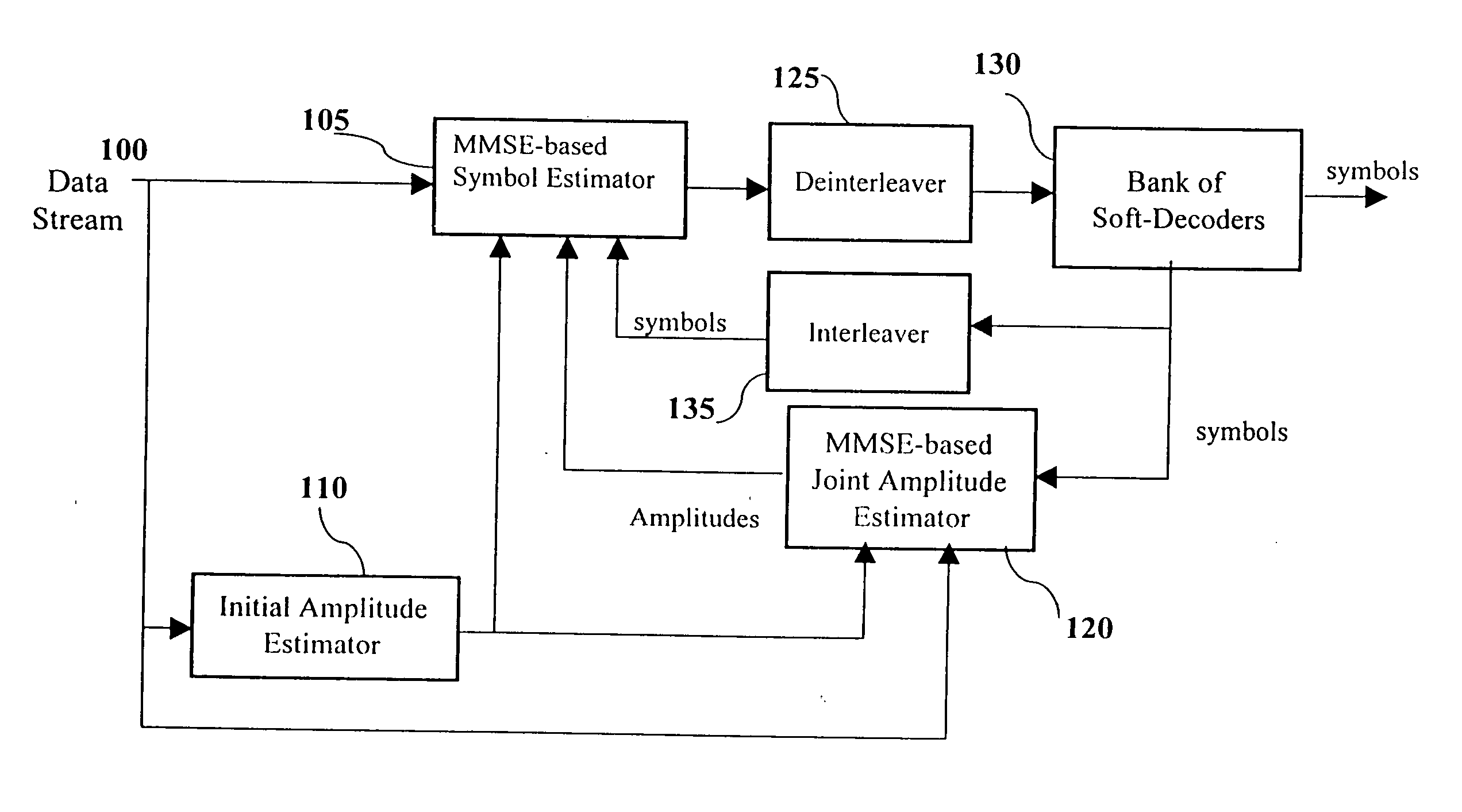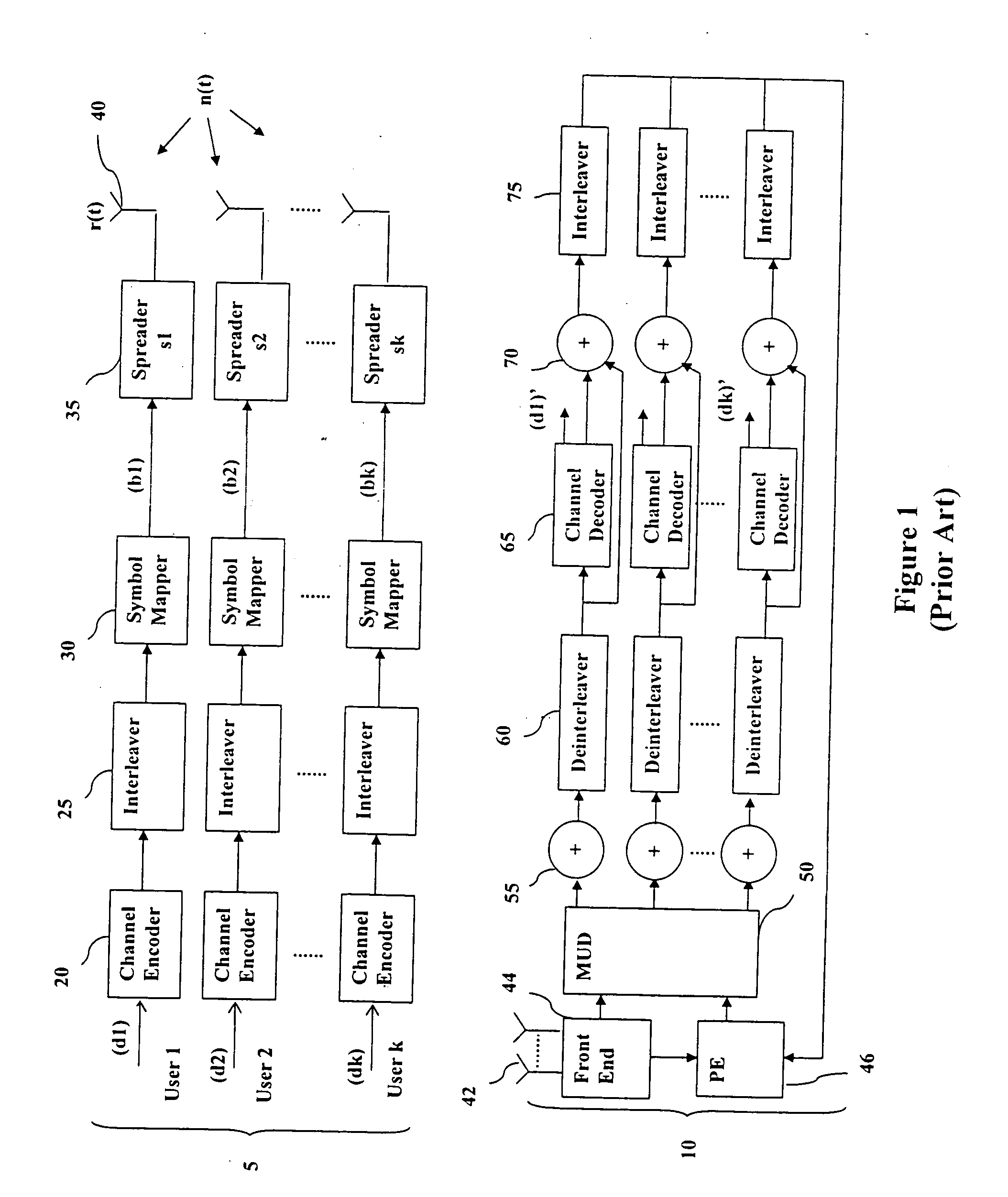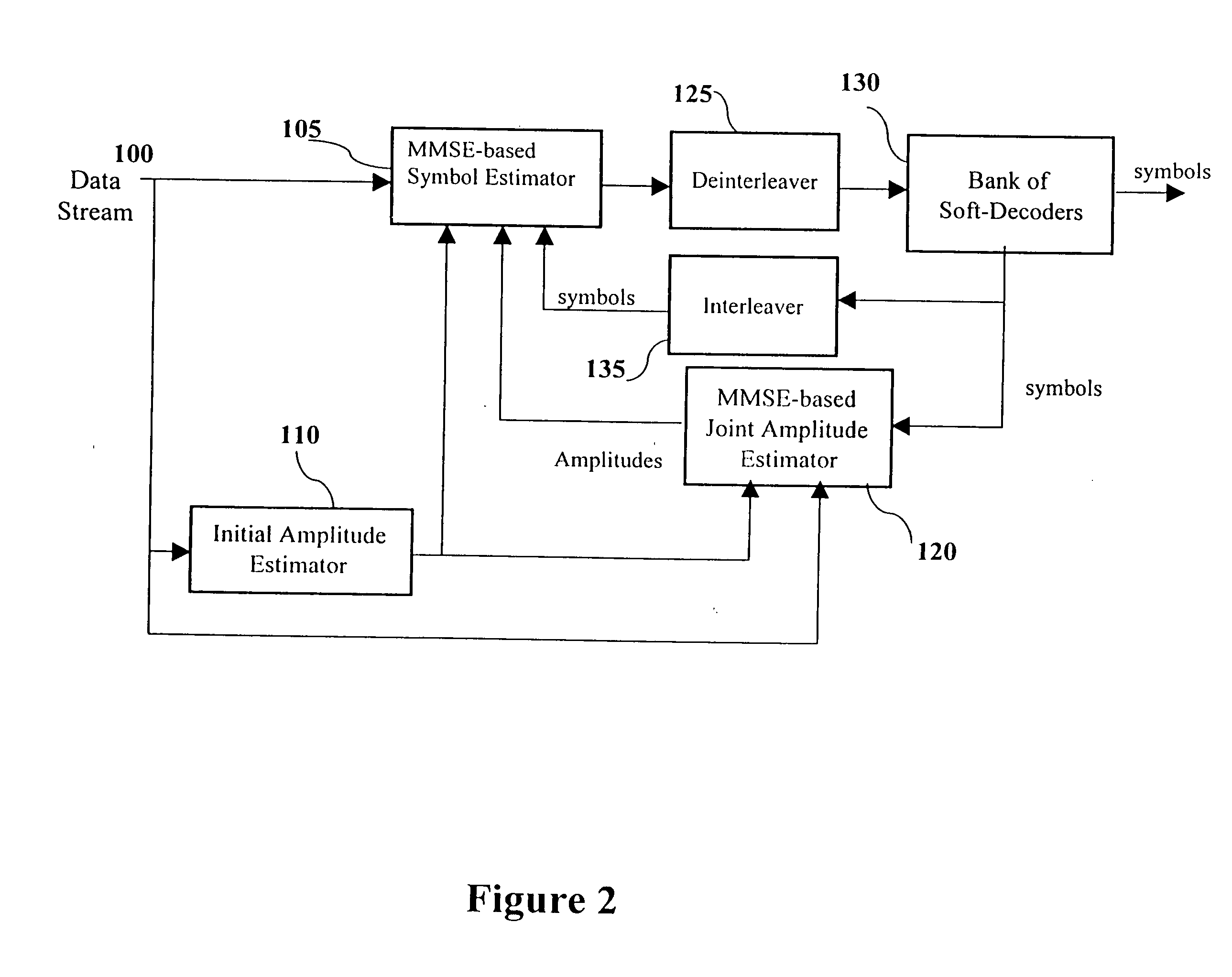Despite advancements in
wireless transmission and reception, there is a growing problem of extracting more information signals within a limited bandwidth.
However, since many users transmit energy on the same communications channel, a number of inherent difficulties arise, particularly when receivers attempt to detect the information associated with a particular user when there is heavy
signal interference created by other users of the
system at the same time.
Typically the
signal of interest cannot be received or the quality of reception is significantly degraded.
The ability to extract the correct data from a given user is a difficult task when the effects of interference and multipaths are considered.
The problem is further complicated when the number of users exceeds the number of dimensions (e.g. time slots, frequency slots, polarizations, etc), resulting in an overloaded condition.
In addition to the problems associated with multiple users in a given bandwidth, an additional problem is the inability to process the data in the receivers in real time.
However, state of the art receivers are not capable of detecting and decoding the information associated with each user under conditions of heavy interference.
This, of course, is not an attractive option for telecommunication companies, since obtaining the maximum number of users or managing peak volume transmission periods are important
business objectives.
Interference from adjacent channels is limited by the use of band pass filters, however for each channel being assigned a different frequency system the total capacity is limited by the available frequency slots and by
physical limitations imposed by
frequency reuse.
A further drawback with FDMA schemes is that users will pay full-time for their assigned frequency regardless of their
actual use of the system.
However, in a CDMA system, the total level of co-channel interference limits the number of active users at any instant of time.
The prior systems do not properly account for the real world mobile communication signals that suffer from signal degradation such as interference and multipath problems.
However, this assumption is not accurate for co-channel interference and multipaths.
Co-channel interference refers to signals received from other users either directly or reflected.
If this is the case, the transmitted symbols interfere with past and future transmitted symbols.
In actuality, performance is degraded both by co-channel interference and ISI.
The maximum likelihood joint demodulator is capable, in theory, of accommodating the largest number of interfering signals, but has a prohibitive computational complexity that makes it unrealizable in practice.
The decorrelator as well as virtually every other lower complexity joint demodulator, is not capable of operation when the number of signals is over a set threshold which falls significantly short of the theoretical maximum.
These transmissions have the real-time problems of multi-path and co-channel interference,
fading, and dispersion that affect the received signals.
While providing certain advantages, the performance has not been demonstrably improved.
However, one of the primary disadvantages of the prior references implementations is the inability to accommodate overloaded conditions.
Decision feedback techniques are limited in that they are incapable of working in supersaturated environments.
Although the MMSE-based decision feedback
detector can work in a supersaturated environment, it has been demonstrated to be too aggressive with
hypothesis testing to produce accurate results.
Therefore the advantages offered to the MUD are not exploited and the aggregate
throughput of a multiple access system is limited if amplitude is not exploited.
However, this suffers from a significant
disadvantage in that it requires knowledge of all parameters to perform the
processing.
Hence, the optimal
processing is a computationally complex and it is not possible to accomplish in a real-time environment.
Thus for those multi-user detectors that examine the entire space, real-time operation is often elusive.
However, for multi-user detectors that examine a larger capacity of signal, the computations are complex and time-consuming, thus making real-time operation impossible.
Numerous attempts at reliable
pruning of the optimal MUD
decision process or the use of
linear approximation to the replace the optimal MUD have still not produced a workable solution for the real world environment.
But,
linear algebra based MUD (non-iterative) and successive interference cancellation fails for cases of overloaded multiple access systems.
Even for underloaded multiple access systems, the performance of non-iterative MUD and successive interference cancellation degrades significantly as the number of users increases, while the
computation complexity of the optimal MUD increases significantly as the number of users increases.
The computing problems are so extreme that even the most expensive hardware unbound by size and weight can often to keep us with this overwhelming complex
processing requirement of optimal MUD.
Moreover, an unreasonable
delay would be required to decode each bit or symbol rendering such a system useless in practice.
To combat improper
pruning, basic tree-
pruning must ensure that M is “large enough”, and therefore still encounters increased complexity for acceptable performance levels when the number of interfering signals and / or ISI lengths are moderate to large.
However, single-user decoders operating on hard values, or discrete integers, have unacceptable error rates when there is a large amount of interference or
noise in the received signal.
The reason is that discrete integers do not provide adequate confidence values on which the single-user decoder can operate.
Moreover, when dealing with hand-held communications units such as
wireless handsets, the amount of processing within the device is limited, directly limiting the amount of computational complexity that is allowed.
Conventional
receiver performance is unsatisfactory in the presence of co-channel interference.
 Login to View More
Login to View More  Login to View More
Login to View More 


